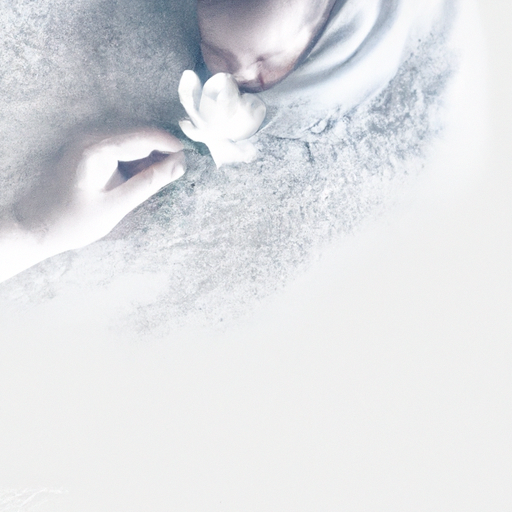Are you a new mother experiencing discomfort while breastfeeding? Addressing milk blisters and blebs can help alleviate the pain and improve your breastfeeding experience. Milk blisters, also known as nipple blebs, are common issues that can occur during lactation. These small, white spots on the nipple can lead to blocked milk ducts and cause pain during feeding. In this article, we will explore the causes behind these blisters and provide solutions to help you overcome this challenge. With the right knowledge and techniques, you can ensure a smoother breastfeeding journey for both you and your baby.
Causes of Milk Blisters and Blebs
Incorrect latch
One of the leading causes of milk blisters and blebs is an incorrect latch during breastfeeding. When the baby does not latch onto the breast properly, it can create friction and pressure on the nipple, leading to the formation of milk blisters or blebs. It is crucial for mothers to ensure that their baby is latching onto the breast correctly to prevent these issues from occurring.
Engorgement
Engorgement occurs when the breasts become overly full and swollen with milk. This can happen in the early days of breastfeeding when the milk supply is still regulating. When the breasts are engorged, it can contribute to the development of milk blisters and blebs. It is important to manage engorgement promptly through frequent breastfeeding or pumping to prevent these issues.
Nipple compression
Nipple compression can also be a contributing factor to the formation of milk blisters and blebs. This occurs when there is excessive pressure or squeezing of the nipple, leading to the blockage of milk ducts and the formation of blisters or blebs. It is important to ensure that the baby’s mouth is properly positioned and not compressing the nipple during breastfeeding.
Skin anatomy
The anatomy of the nipple and surrounding skin can also play a role in the development of milk blisters and blebs. Some individuals may have nipples that are more prone to these issues due to their shape or texture. The size and position of milk duct openings on the nipple can also contribute to the formation of blisters and blebs. Understanding and addressing these anatomical factors can help prevent the occurrence of these issues.
Blocked milk ducts
Blocked milk ducts are a common underlying cause of milk blisters and blebs. When a milk duct becomes blocked, it can cause a buildup of milk behind the blockage, leading to the formation of a blister or bleb on the nipple. It is important to address and manage blocked milk ducts promptly to prevent the development of these issues.
Symptoms of Milk Blisters and Blebs
Visible blister or bleb on the nipple
One of the most obvious symptoms of milk blisters and blebs is the presence of a visible blister or bleb on the nipple. These can vary in size and appearance, but they typically appear as a small white or yellow spot on the nipple, similar to a pimple. It is essential to identify these symptoms early on to seek appropriate treatment and prevent further complications.
Pain or discomfort during breastfeeding
Mothers may experience pain or discomfort during breastfeeding if they have a milk blister or bleb. The presence of these issues can cause aching, burning, or throbbing sensations during nursing sessions. This pain can significantly impact the breastfeeding experience and may result in reluctance or difficulty in continuing to breastfeed.
Milk supply issues
In some cases, milk blisters and blebs can also lead to milk supply issues. The blockage caused by these issues can impede the flow of milk and result in a decrease in milk production. Addressing the underlying cause of the blister or bleb and finding appropriate treatment can help restore and maintain a healthy milk supply.
Prevention of Milk Blisters and Blebs
Proper latching techniques
One of the most effective ways to prevent milk blisters and blebs is by ensuring proper latching techniques during breastfeeding. It is essential to make sure that the baby’s mouth covers a large portion of the areola, not just the nipple, while feeding. Proper latch not only prevents the formation of blisters and blebs but also promotes efficient milk transfer and reduces the risk of other breastfeeding issues.
Frequent breastfeeding or pumping
Frequent breastfeeding or pumping can help prevent the occurrence of milk blisters and blebs. By emptying the breasts regularly, the risk of engorgement and blocked milk ducts is reduced. Establishing a consistent breastfeeding routine and ensuring that the baby is nursing effectively can greatly contribute to the prevention of these issues.
Avoiding tight clothing
Wearing tight clothing, particularly around the breasts, can increase the risk of milk blisters and blebs. Restrictive clothing can put pressure on the nipples, leading to compression and blockages. It is advisable to opt for loose-fitting and comfortable clothing to allow proper airflow and minimize friction on the nipples.
Keeping nipples clean and dry
Maintaining good nipple hygiene is crucial in preventing milk blisters and blebs. Keeping the nipples clean and dry can help prevent bacterial growth and potential infections. After breastfeeding, it is recommended to gently clean the nipples with warm water and pat them dry. Avoiding harsh soaps or excessive moisture can help maintain the skin’s natural balance and prevent the occurrence of blisters and blebs.
